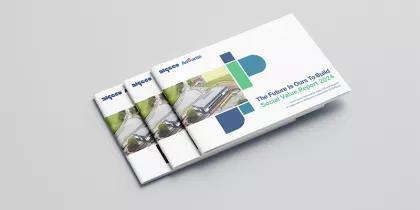Our Approach

Loops within Loops for Sustainable Futures
Loops within Loops is our sustainable circular business model. It simply means we use innovative sustainable design solutions to produce modular units that can stay in service longer, going round and round again. This reduces the use of virgin materials, minimising resources and waste.
By designing in sustainability and designing out waste, we produce a circular product that can be reused, refurbished, remade and assembled. We do this to meet the expectations of our stakeholder groups, who want maximum value with minimum impact.
Through our services, projects, and client portfolio, we have integrated sustainability and ESG factors into our vision, purpose, and everyday business.
Circularity
By minimising resource consumption, and operating in as many ‘circular loops’ as possible, our modular solutions are less intensive than traditional construction, with a lower carbon footprint.
Adaptability
By being fully reusable, flexible, reconfigurable, and recyclable, our units can adapt to changing demands and shifting demographics to meet climate adaptation and climate change demands.
Leasing
By leasing assets, they remain under our control for their full lifecycle. We can therefore innovatively manage environmental issues, such as recycling and waste, to minimise environment and social impacts.

Sustainable modular solutions for a fast-moving world
Highlights from our latest Social Value Report:
• 30% reduction in global Scope 1 and Scope 2 market-based emissions vs 2020;
• 67% less waste to landfill since 2020 per product unit
• 885 hours of volunteering